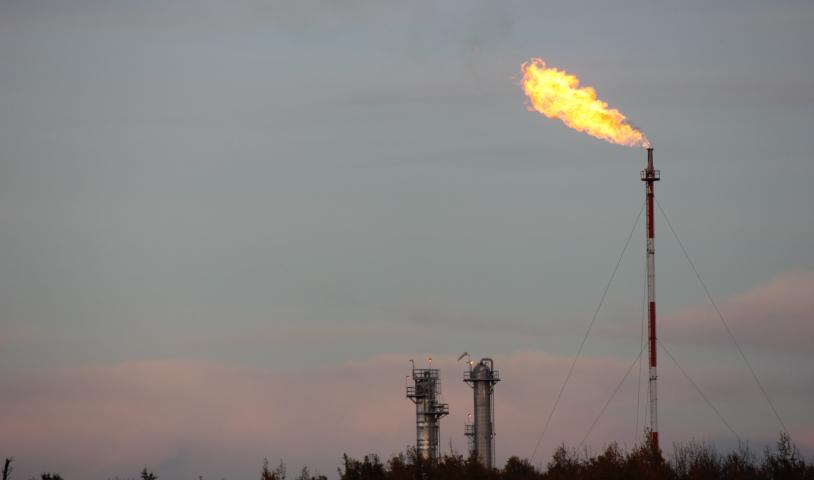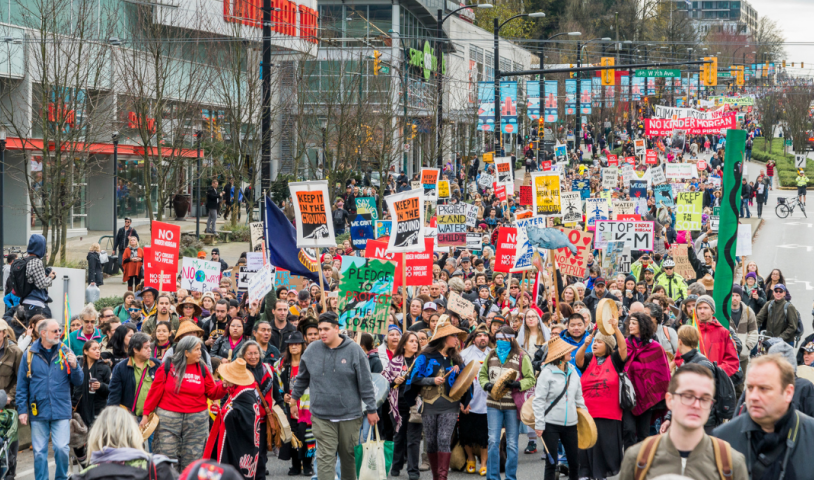GREEN SCENE: Will it be bye, bye Burrard Thermal? Well, not so fast
Saturday, November 7, 2009
Tri-City News file photo: Burrard Thermal power plant in Port Moody burns natural gas to generate electricity.
The press release from the Ministry of Energy, Mines and Petroleum Resources last week might have you thinking the Burrard Thermal generating plant in Port Moody will soon be shut down and our air quality will be much improved as a consequence.
Wrong on both counts.
I think this press release was more about the BC Liberal government creating energy policies to favour its supporters in the private power industry.
BC Hydro’s Burrard Thermal plant on Port Moody’s north shore has the capacity to generate up to 10% of Hydro’s electricity output. Built between 1961 and ’75, and upgraded in the 1990s, this plant burns natural gas to produce electricity. It has rarely been used at full capacity and remains in good operating condition.
Since 2002, the plant has been used mostly to supply electricity during our peak demand period in the winter, when it is cold and dark. Since that time, it has provided, on average, slightly less than 300 gigawatt hours (GWh) per year, a mere 5% of its full capacity.
The plant also provides voltage regulation for transmission lines feeding into the Lower Mainland and is kept fully operational so that it could supply emergency electricity in the event of, for instance, ice storms.
Overall, using Burrard Thermal to meet peak demand periods is an excellent use for this older but still important facility. I certainly don’t support it being used at full capacity but it is well suited to provide peak power.
Last week’s press release was strangely silent on the use of Burrard to supply peak electricity but I expect this vital function will remain in place.
Despite the Minister of Energy’s claims, Burrard produces very little in the way of greenhouse gases or other pollutants such as nitrogen oxides. Given that it operates in the winter, it can’t contribute at all to smog production, which happens during the hot and sunny summer months. As well, installation of selective catalytic reduction units in the 1990s reduced Burrard’s nitrogen oxides emissions by 90%.
Used as a peaking facility for a few weeks in the winter, it now contributes about 0.03% of the total nitrogen oxides and less than 0.3% of greenhouse gases in the lower Fraser Valley airshed.
By contrast, road transportation accounts for 38% of nitrogen dioxide emissions and 36% of our greenhouse gas emissions.
If you are looking for a culprit on which to blame poor air quality or global warming, you might want to check out what’s parked in your garage.
While run-of-river power is a renewable source, these plants supply only intermittent power, mainly in the spring, when creek flows are high from snowmelt. They cannot substitute for Burrard Thermal because most of these plants are unable to supply power in the winter, when their high elevation intakes are frozen.
In 2008, BC Hydro bought approximately 1,500 GWh of electricity from about 30 run-of-river facilities around the province. This electricity is some of the most costly that BC Hydro purchases. Despite the high price, it is mainly available when there is a surplus of potential electricity — i.e., water — in BC Hydro’s system. Thus, run-of-river power is high-priced but low-value. This summer, when BC Utilities Commission suggested BC Hydro had only a limited need for this type of electricity, it got its knuckles rapped by government.
BC Hydro also purchases electricity from private companies that generate electricity from natural gas. Last year, it purchased almost 3,000 GWh of such electricity — about 10 times more than is generated at Burrard Thermal.
If burning natural gas to generate electricity is such a dastardly activity, I have to wonder why the provincial government is not asking BC Hydro to reduce electricity purchases from these companies?
The government claims B.C. is not self-sufficient in electricity production. In fact, in most years, we export more electricity than we import. Most of the electricity we purchase from outside the province is coal-generated electricity from Alberta in the middle of the night when there is little demand for it and the electricity is low-priced.
One of the benefits of hydro power is that it is easy to shut off or adjust — unlike coal plants, which are very inefficient to ramp up and down. This means our night-time purchases of electricity actually help the Alberta plants run more efficiently and, thus, conserve carbon dioxide.
In general, I think we have a sensible and reasonably balanced electricity system in B.C. I’m all for doing more to improve its efficiency and reduce impacts on the environment but I don’t support policies that appear to be designed simply to deliver more profit to private companies.
Elaine Golds is a Port Moody environmentalist who is vice-president of Burke Mountain Naturalists, chair of the Colony Farm Park Association and president of the Port Moody Ecological Society.





